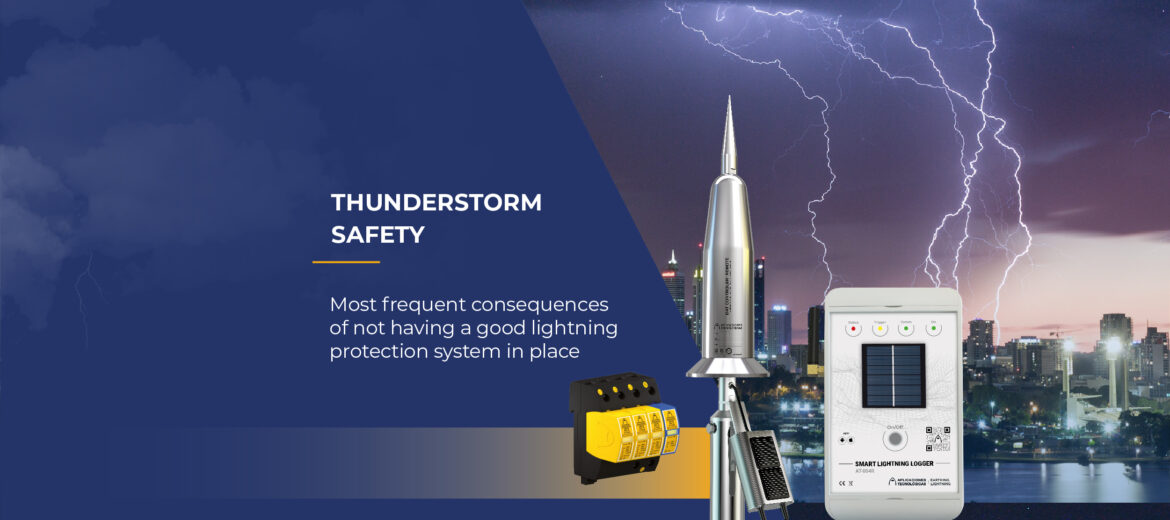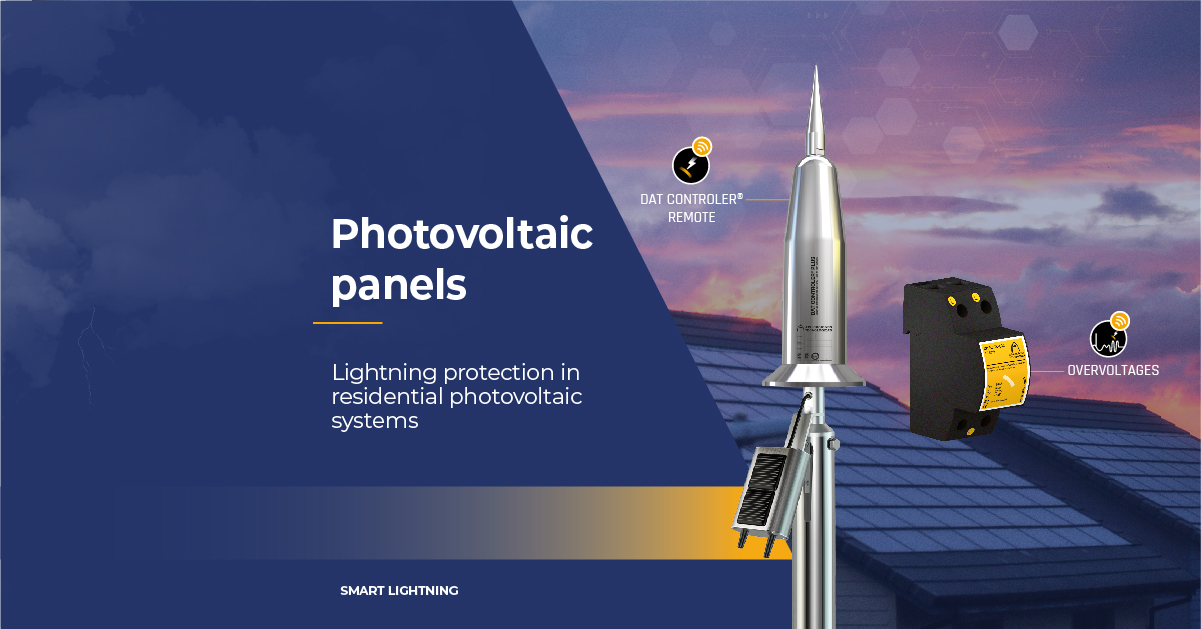Lightning and surge protection are essential in any type of building, whether it is an individual dwelling, a residential building or a critical structure such as a data centre. Lightning strikes are natural phenomena that can release large amounts of energy in a fraction of a second, while both atmospheric discharges and fluctuations in the power grid can cause surges. The consequences of not having a protection system in place or an inadequate one represent a significant risk to people, electronic equipment and the integrity of structures.
The Technical Prevention Note NTP 1.084, published by the National Institute for Safety and Hygiene at Work to prevent occupational hazards caused by lightning strikes, describes, among other aspects, the effects and consequences of lightning’s impact on structures and service lines.
The risk of a lightning strike on a structure depends on several factors such as height, the number of lightning strikes in the area, and whether it is surrounded by higher elements or isolated, among many others. If the structure does not have a lightning rod, the lightning will normally strike at the highest point of the structure and will seek the path to the ground in an uncontrolled manner, through antennas, concrete structures, pipes or cables. This current passage can cause breakages and sparks that pose a risk of fire and damage to people and equipment inside. In these cases, the danger increases if the structure contains toxic, flammable or explosive products, and the damage may extend beyond the structure struck by lightning.
As for electricity supply and telecommunication lines (telephone, television, internet), as they penetrate structures from the outside, they can introduce part of the lightning current into a building even if it has a lightning conductor.
The main consequences of not having a complete lightning protection system in place
- Damage to electronic equipment. Modern electronics are extremely sensitive to voltage fluctuations. Lightning strikes can induce current spikes in the building’s electrical system, which can permanently damage appliances, entertainment systems, computers and connected devices. Even a short-term surge can destroy internal components, resulting in repair or replacement costs. Without a proper protection system, the investment in home technology can be lost in an instant. They can also affect safety equipment (e.g. safety brakes in lifts in high-rise buildings) or cause sparks in explosion-risk areas.
- Risk to people: Lightning strikes can cause fires or explosions inside a structure. The lightning current coursing through a structure in an uncontrolled manner can cause dangerous sparks leading to fires. In addition, if lightning strikes the building directly or strikes nearby, induced currents can overheat electrical wiring and cause short circuits that could also lead to a life-threatening fire. The effects of lightning in poorly protected buildings are unpredictable and can result in serious personal injury if precautions are not taken. In addition, when lightning current is scattered to earth, it can cause serious injury to people and even death due to step and touch voltages.
- Structural damage: The energy released by lightning that directly strikes a house can cause physical damage to the structure. This includes cracks in walls, damage to roofs or, in extreme cases, partial collapse of the house. In addition, water pipes, gas pipes and telephone lines can be affected, creating additional risks such as gas leaks.
- Power grid problems: In many cases, a power surge may not only affect a single house but extend throughout the power grid. Without a protection system that adequately insulates the home, it is possible for a lightning strike near the power grid to wreak havoc not just on one residence, but on an entire community.
The importance of a lightning protection system
Lightning and surge protection systems are not only a matter of safety, but also a matter of responsibility and prevention of economic and structural damage. The installation of a suitable lightning protection system and its correct maintenance can prevent:
- High repair costs: Damage to equipment and the physical structure of a building can be extremely costly. In the case of hospitals, the cost of medical equipment is extremely high, and the repair or replacement of these devices could affect the institution’s operating budget.
- Personal damage: The main reason for protection is to safeguard lives. In dwellings and other structures, the possibility of fire, electrical failure, gas leaks, direct impact hazards, and touch and step voltages endanger people in and around them.
- Service disruptions: In a critical structure, such as a medical facility, a protection system prevents service interruptions that could have serious consequences for patients. Continuity of power supply and proper functioning of equipment are essential for medical care.
- Data preservation: In any facility, loss of data can be a serious inconvenience. In a hospital, this can mean incorrect diagnoses, wrong treatment or delays in care. In data centres, it can mean the loss of sensitive information for the company itself or for those it serves.
In short, the lack of a lightning and surge protection system can have serious consequences for both private homes and critical infrastructures. The risks range from economic damage to loss of life, making it imperative to invest in adequate protection.
Such measures, while they may seem costly initially, are a long-term investment in the safety, integrity and operation of buildings.
Smart Lightning – Lightning Protection Systems 4.0
A lightning protection system aims to capture lightning, conduct its current safely to earth, dissipate it to earth and protect against the secondary effects of lightning. They consist of external and internal protection elements:
- Capturing system (lightning arrester with priming device (PDC) or single point).
- Down conductors
- Grounding system
- Surge protection
- Other measures to minimise the destructive effects of lightning (equipotential bonding, shielding, etc.)
SMART LIGHTNING is Aplicaciones Tecnológicas S.A.’s 4.0 approach to lightning safety, the most advanced range of technological services and products for lightning safety. SMART LIGHTNING integrates connectivity and smart solutions in lightning protection systems, facilitating the control of public and private assets through an IoT platform.
If you have doubts about whether or not to install one, from Aplicaciones Tecnológicas S.A. we can carry out a study based on the standards and your specific needs. You can contact our technicians by clicking here.
If you wish, you can also attend any of our free online training courses on lightning protection on our webinar page.



